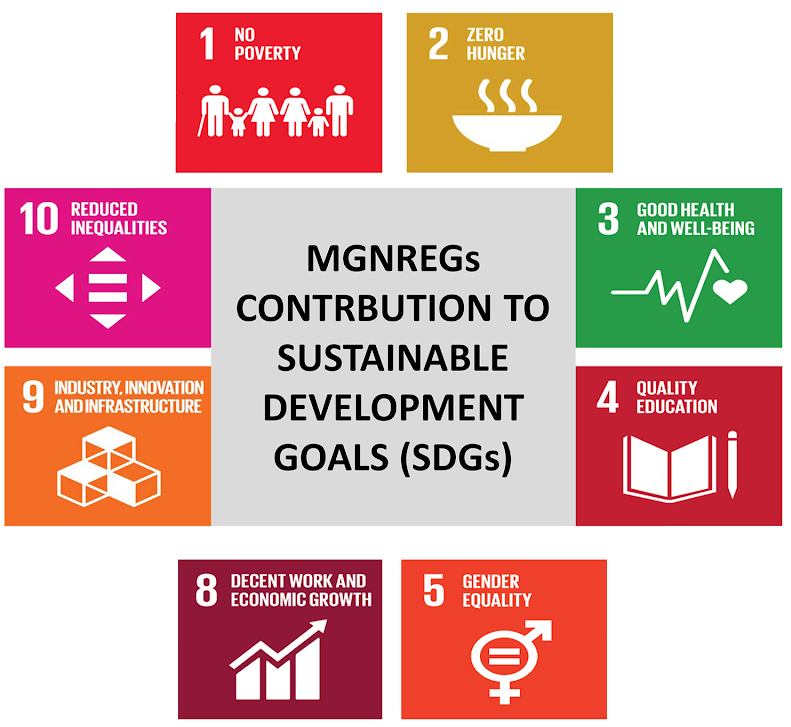MGNREGA Delay in Payments | 09 Nov 2021
This editorial is based on the article The long road to timely MGNREGA payments which was published in The Hindu on 08/11/2021. It talks about the issues of implementation of MGNREGA and the way forward to deal with the issues.
The People’s Action for Employment Guarantee (PAEG) recently released a tracker with important metrics on Mahatma Gandhi National Rural Employment Guarantee Act (MGNREGA) implementation. It showed that funds allocation this financial year (FY 2021) is 34% lower than the revised budget allocation of last year. And this year’s funds have been exhausted.
Moreover, there is a pending arrears of Rs. 17,543 crore from previous years. In a welcome move since the media reports, the Chief Ministers of Odisha and Tamil Nadu wrote to the Prime Minister seeking additional funds for MGNREGA.
In the light of this, there is a need to review the working of MGNREGA and analyse the issues associated with its implementation.
Mahatma Gandhi National Rural Employment Guarantee Act (MGNREGA)
- MGNREGA is one of the largest work guarantee programmes in the world.
- Objective: The primary objective of the scheme is to guarantee 100 days of employment in every financial year to adult members of any rural household willing to do public work-related unskilled manual work.
- Legal Right to Work: Unlike earlier employment guarantee schemes, the act aims at addressing the causes of chronic poverty through a rights-based framework.
- At least one-third of beneficiaries have to be women.
- Wages must be paid according to the statutory minimum wages specified for agricultural labourers in the state under the Minimum Wages Act, 1948.
- Demand-Driven Scheme: The most important part of MGNREGA’s design is its legally-backed guarantee for any rural adult to get work within 15 days of demanding it, failing which an ‘unemployment allowance’ must be given.
- This demand-driven scheme enables the self-selection of workers.
- Decentralised planning: There is an emphasis on strengthening the process of decentralisation by giving a significant role in Panchayati Raj Institutions (PRIs) in planning and implementing these works.
- The act mandates Gram sabhas to recommend the works that are to be undertaken and at least 50% of the works must be executed by them.
Issues Associated With Implementation of Scheme
- Delay and Insufficiency in Funds Dispersal: Most states have failed to disburse wages within 15 days as mandated by MGNREGA. In addition, workers are not compensated for a delay in payment of wages.
- This has turned the scheme into a supply-based programme and subsequently, workers had begun to lose interest in working under it.
- There is ample evidence by now, including an admission by the Ministry of Finance, that delays in wage payments are a consequence of insufficient funds.
- Caste Based Segregation: There were significant variations in delays by caste. While 46% of payments to SC workers and 37% for ST workers were completed in the mandated seven-day period, it was a dismal 26% for non-SC/ST workers.
- The negative impact of caste-based segregation was felt acutely in poorer States such as Madhya Pradesh, Jharkhand, Odisha and West Bengal.
- Ridiculously Low Wage Rate: Currently, the MNREGA wage rates of at least 17 of the 21 major states are even lower than the state minimum wage for agriculture. The shortfall is in the range of 2-33% of the minimum wage.
- Ineffective Role of PRI: With very little autonomy, gram panchayats are not able to implement this act in an effective and efficient manner.
- Large Number of Incomplete works: There has been a delay in the completion of works under MGNREGA and inspection of projects has been irregular. Also, there is an issue of quality of work and asset creation under MGNREGA.
- Fabrication of Job cards: There are several issues related to the existence of fake job cards, the inclusion of fictitious names, missing entries and delays in making entries in job cards.
Way Forward
- Strengthening the Scheme:
- There is a need for better coordination between various government departments and the mechanism to allot and measure the work.
- This is one of the best welfare schemes in recent years and it has helped the rural poor. However, government officials must take the initiative to implement the scheme and must not block the work.
- Gender Wage Gap: Some discrepancies in the payouts need to be addressed, too. Women in the sector, on an average, earn 22.24% less than their male counterparts.
- Short-Term Measures:
- State governments must ensure that public work gets started in every village. Workers turning up at the worksite should be provided work immediately, without much delay.
- Local bodies must proactively reach out to returned and quarantined migrant workers and help those in need to get job cards.
- Adequate facilities such as soap, water, and masks for workers must be provided free of cost, at the worksite.
- At this time, there is a need to speed up the payments to MGNREGA workers. Preferably, cash needs to reach the workers easily and efficiently.
- Long-Term Measures:
- The pandemic has demonstrated the importance of decentralised governance.
- Gram panchayats need to be provided with adequate resources, powers, and responsibilities to sanction works, provide work on demand, and authorise wage payments to ensure there are no delays in payments.
- MGNREGA should be converged with other schemes of the government. For example, Green India initiative, Swachh Bharat Abhiyan etc.
- Social Auditing creates accountability of performance, especially towards immediate stakeholders.
- Hence, there is a need to create awareness regarding government policies and measures in rural areas.
- The pandemic has demonstrated the importance of decentralised governance.
|
Drishti Mains Question Mahatma Gandhi National Rural Employment Guarantee scheme originally supposed to be a demand-based programme. But lately it has become a supply based programme. Discuss. |

